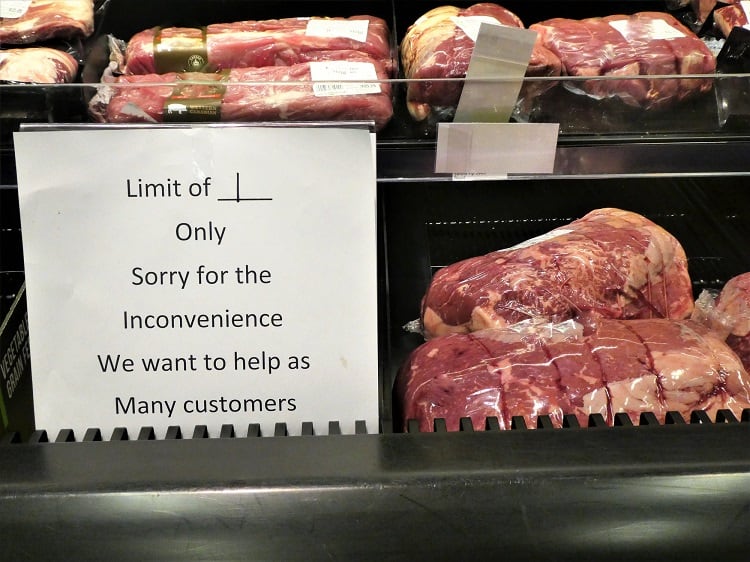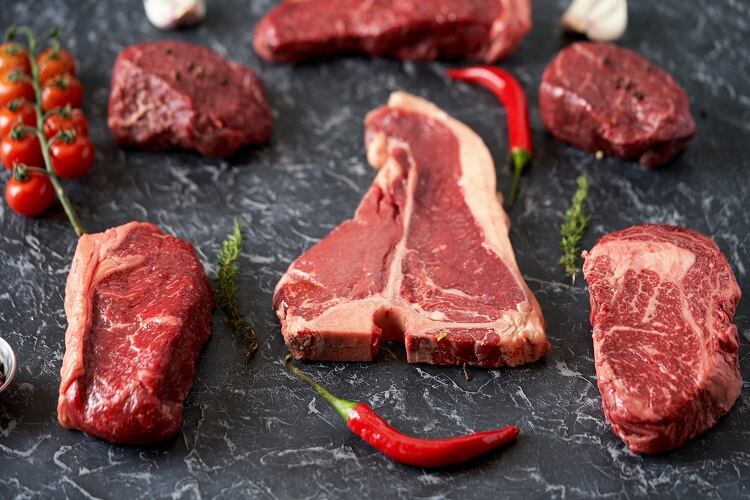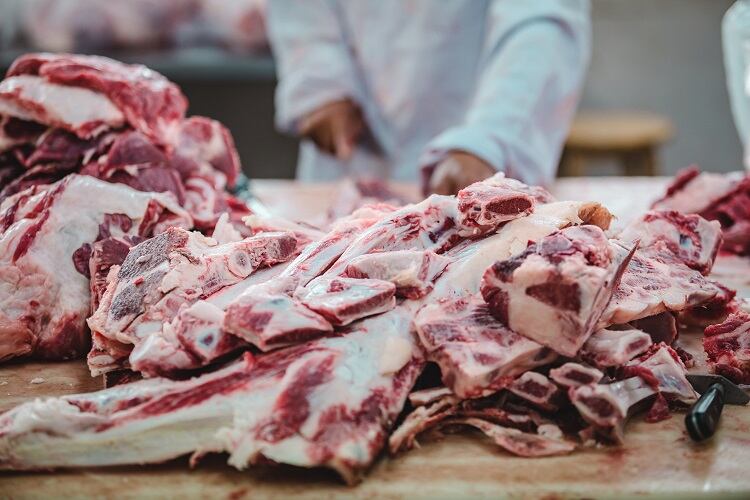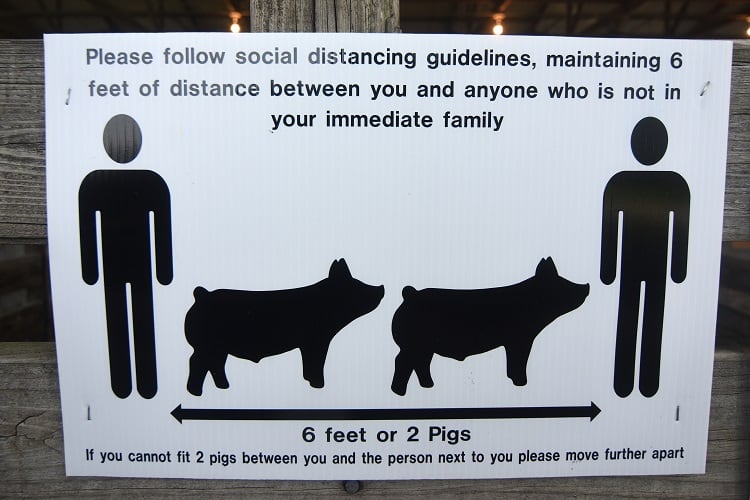COVID-19 has completely disrupted the meat industry, changing how meatpackers work, the way poultry, beef, and pork is produced, how it is purchased by consumers, and traded between countries.
In the short term, the pandemic has seen retailers struggle to meet increased demand for meat, foodservice grind to a halt, and outbreaks in processing plants cause labour shortages. But what does COVID-19 mean for Europe’s meat sector in the long term?
According to Rupert Claxton, Meat Director at consultancy and market research firm Gira, the sector is far from immune from the impending global recession.
At this year’s Belgian Meat Office’s Round Table, held virtually last week, Claxton told delegates he is ‘particularly worried’ about the economic impact of COVID-19, which will be felt well into 2021.
Foodservice: Prepare for a slow recovery
When the novel coronavirus hit, foodservice seemingly shut down overnight. At the same time, demand for meat in retail spiked.
No matter how great this surge in demand, the consumer shift to retail has not made up for the loss of volume in foodservice, said Claxton. And the loss, we were told, is significant.
According to Gira, foodservice in the US is down -27% in 2020 compared to 2019 figures. The market research firm predicts the sector to be down -10% in 2021, again, compared to 2019.
In China, the story is more positive, with foodservice down -24% this year, and predicted to be up 5% compared to 2019 figures by 2021.
In Europe (EU27+UK), foodservice is down a whopping -33% this year, with predictions for 2021 sitting at -14%. “We have a reduced market as a result of the pandemic,” said Claxton.

As European lockdown measures begin to ease and foodservice opens up once more, two key factors are still keeping consumers in the home – for eating, at least.
One is the economic factor, meat market expert Claxton explained, suggesting that loss of income and redundancies mean consumers are limiting their spend. The other is the ‘fear factor’, whereby consumers choose to avoid crowds and public spaces due for fear of infection.
Long-lasting economic impacts
This loss of demand is predicted to continue through 2020, into 2021. “Next year as a whole will remain low, and so challenged in terms of where that demand is. We’ve got to go into 2021 expecting it to be a tougher year and a reduced European market becoming of the economic factors of COVID-19, more so than the physical impact of COVID itself,” we were told.
Of course, there are physical impacts within the sector. Production was hit this year by plant closures and labour shortages across poultry, pork, and beef sectors.
There will be ‘some recovery’ going into 2021, said Claxton, with more ‘normal seasonality’ in production.
But to achieve that, the analyst warned, Europe needs to step up exports. “European demand is going to be weaker, so we’ve got to look for better opportunities outside of Europe, and we’ve got to accept that there are going to be lower prices within the European market. We’re going to have to work harder to find those optimum opportunities.”
The analyst raised concerns that premium products, predominantly sold in foodservice, will also be impacted by the pandemic in the coming months. These include organic and certified products, as well as veal, lamb, beefsteak, and Parma ham.
“I’m really worried about [domestic demand loss] going forward,” said Claxton. “As we go into this phase, where people realise that they don’t have job certainty, that they haven’t got money coming in, that their salaries have been reduced, or that they’ve been laid off, then we’re going to see people downtrade. And it’s the premium products that get hurt.”
Downtrading across the board is to be expected. When Gira analysed shopping behaviour in the wake of the 2008 financial crash, the business observed consumers downtrading from beefsteak to mince, from beef to chicken, and in the developing world, from chicken to eggs and from eggs to vegetables.

“We are going to see that through the second half of this year and into 2021,” he told delegates. “And so that means less demand around the world, and different ways of servicing it.”
Other factors at play: ASF, animal welfare standards, Brexit…
COVID-19’s impact on the meat industry should be analysed with African swine fever (ASF) in mind. The highly contagious viral disease of domestic and wild pigs has swept through Asia and drastically hit supply in recent times.
China, in particular, has suffered from ASF. In August 2018, the nation reported its first case. “It is still there, and very likely endemic – despite all efforts that have been made – and has taken an industry with a huge backyard pig herd very quickly,” said Claxton.
Gira estimates that pork production in China was down approximately 27 million tonnes between 2018 and 2019. “So everything we discuss with COVID has to be set against this exceptional position we are in, coming out of the ASF situation.”
Germany is also at risk of ASF. “What will happen to their market if they get it?” said Claxton. And COVID’s impact is, of course, ‘far from over’. “We’re through the height of the pandemic [but] the longterm economic impact is still to come.”
Brexit also brings more uncertainty to the situation. Will Europe and the UK be able to trade freely come 1 January 2021? This question is ‘enormously important’ for various cuts of pork and beef, said Claxton. “There is no clarity on that, and we are getting dangerously close to the deadline now.”
Underlying market forces have not gone away, and must be confronted, stressed the Meat Director. These include increasing animal welfare standards, which adds cost to domestic production, and sustainability being of growing importance for consumers – which also comes at an additional cost.
“[Consumers] are looking at the packet now and trying to work out what does [that product] mean in terms of the choices they’re making. This is adding cost to production. Are [consumers] really prepared to pay for that? Or do they expect it to be part of the service?”
Claxton continued: “2021 will be a difficult year of rebalancing and uncertainty and we’ve got to work our way slowly through it.”




